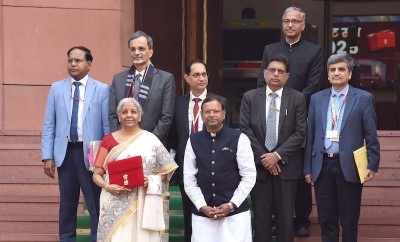UN reports potential for gradual return to global growth, foresees risks, uncertainties
The UN World Economic Situation and Prospects 2015 (WESP) report, which was launched today, estimates growth in 2015 of 3.1 per cent and in 2016 of 3.3 per cent. Those figures are higher than the 2.6 per cent growth recorded this year, where the pace of expansion has been moderate and uneven.
“While some economic indicators are positive and moving in the right direction which points to the potential for a gradual return to consistent economic growth,” said Pingfan Hong, Director of the Development and Policy Analysis Division for the UN Department of Economic and Social Affairs, “many risks and uncertainties could dash efforts to get the global economy on track and moving forward.”
Over the course of 2014, unemployment remained historically high in some regions, though appeared to have stopped rising, while inflation varied, despite being broadly subdued. Trade growth was expected to pick up, while fiscal tightening was expected to continue at a slower pace in most developed economies.
Foreign direct investment inflows remained the most stable and relevant source of financing for developing countries, while capital flows were sensitive to changes in risk appetite. The dollar was expected to remain strong.
To reduce risks and meet challenges, the report says, it is imperative to strengthen international policy coordination. In particular, macroeconomic policies worldwide should be aligned toward supporting robust and balanced growth, creating productive jobs, and maintaining long-term economic and financial stability.
Analyzing countries and regions around the world, the report said that the United States fared well among developed economies, maintaining growth above 2 per cent in 2014, and expecting to continue growth in 2015 (2.8 per cent) and 2016 (3.1 per cent). The forthcoming further normalization of the US Federal Reserve’s monetary policy posed significant risks and uncertainties for the global economic outlook, depending on the timing and strategy of the monetary tightening, as well as the response by financial markets.
Gross Domestic Product (GDP) in Western Europe failed to regain its pre-recession peak and Japan’s economy was expected to slow down on the back of reduced private consumption. The recovery in the Euro area was precarious, with the report citing great risks remaining. Underlying growth momentum was so slow that an exogenous event could return the region to recession.
The report saw divergent growth rates in developing countries and economies in transition during 2014, and projected continued growth momentum in Africa, with GDP growth there expected to accelerate to 4.6 per cent in 2015 and 4.9 per cent in 2016. East Asia was expected to grow fastest at around 6 per cent in both upcoming years, with South Asia set to see a gradual pick-up in economic growth.
Many developing countries and economies in transition faced vulnerabilities due to tightening global financial conditions, aggravated geopolitical tensions and the Ebola epidemic. Large current-account deficits and rapid credit growth in some large emerging economies were causes for concern, particularly if tested by a sudden change in market sentiment, similar to mid-2013 and early 2014. A broad-based downturn in emerging economies, particularly a sharp slowdown in China, would weigh on economic performance worldwide.
Oil price volatility also posed risks to exporters and importers, while geopolitical crises like Ukraine, Iraq, Libya and Syria hampered economic development and remained causes of uncertainty.
Support Our Journalism
We cannot do without you.. your contribution supports unbiased journalism
IBNS is not driven by any ism- not wokeism, not racism, not skewed secularism, not hyper right-wing or left liberal ideals, nor by any hardline religious beliefs or hyper nationalism. We want to serve you good old objective news, as they are. We do not judge or preach. We let people decide for themselves. We only try to present factual and well-sourced news.







